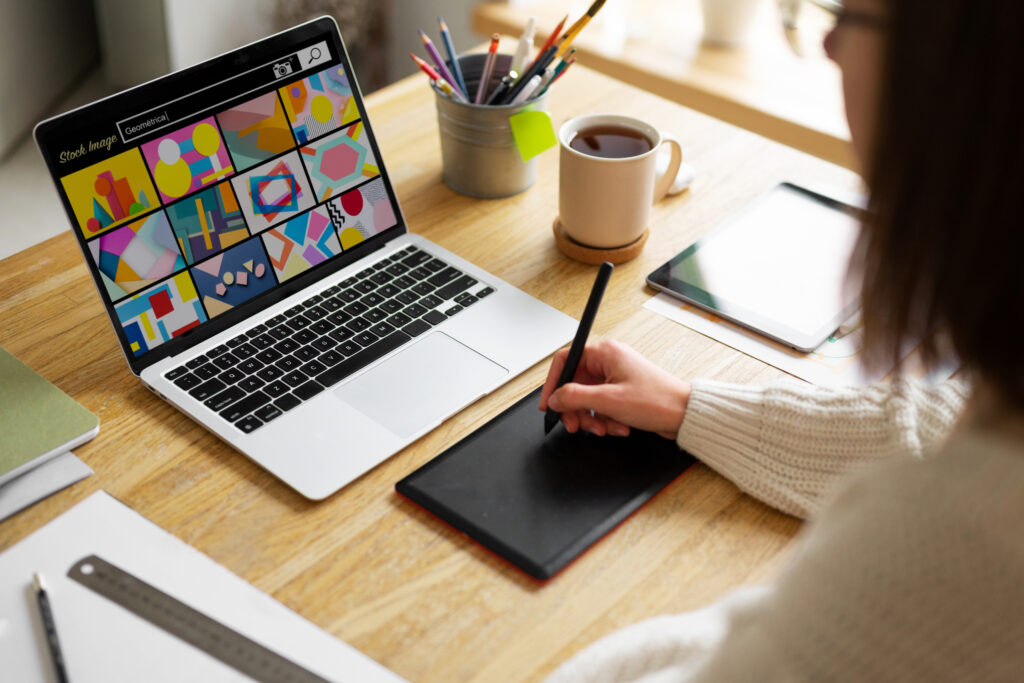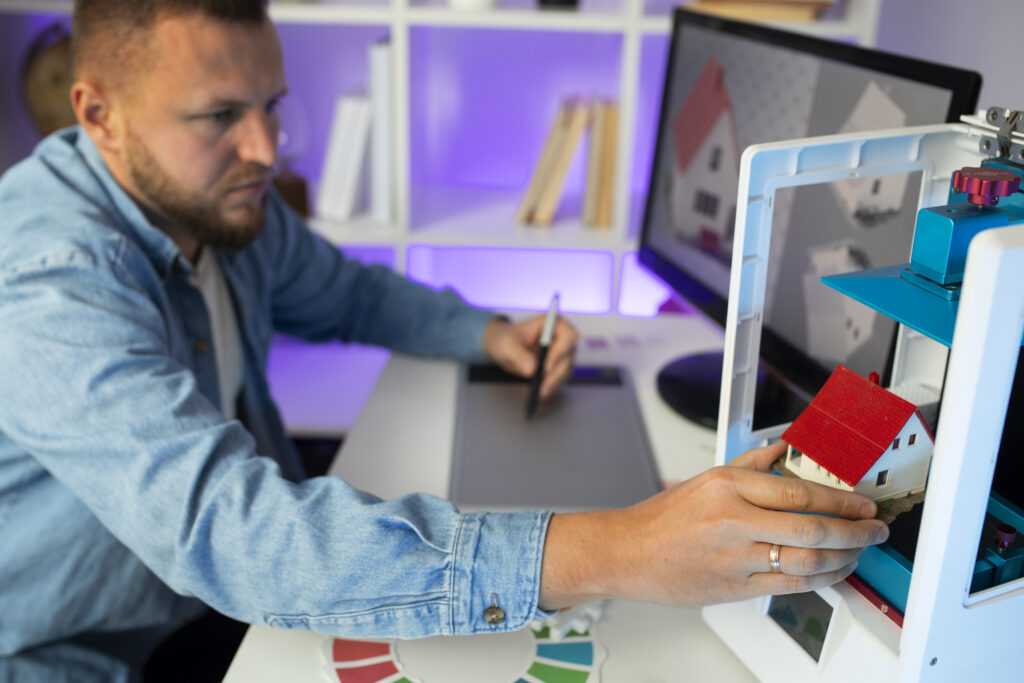Intuitive Art Creation: 7 Best Free Tools
In today’s world of digital art creation, the arrival of free, easy-to-use art creation tools is a game-changer for both artists and designers. These top 7 free tools are changing the game by making high-quality resources available to everyone. They support various creative works, from simple drawings to detailed 3D models. Each tool has features and strengths, offering something unique to the creative process. This makes art more accessible and simplifies the workflow. Yet, the real value of these tools is how they fit with each artist’s way of working. To find the right tool for your art, it’s vital to understand what each one offers.
These tools are for experts and anyone with a passion for creativity. Whether you’re a beginner or a seasoned pro, there’s something out there that can fit seamlessly into your creative routine. Finding the perfect tool requires looking at what each one does best.
Key Takeaways
A closer look at seven leading free tools for creating digital art showcases their ability to make art creation more accessible and flexible. Krita, Pixlr, and Canva each offer unique benefits, from professional-grade tools to user-friendly interfaces and creative templates. These platforms democratize digital art, allowing anyone to bring their visions to life regardless of skill level.
- Krita offers professional tools for free.
- Pixlr enables quick, browser-based edits.
- Canva simplifies design with drag-and-drop.
These tools exemplify the democratization of digital art, making it easier for artists to share their work globally.
Krita: Open Source Power
Krita is making waves as a top choice for digital painting software, leveraging the strength of open-source technology. It’s a go-to for artists everywhere, providing comprehensive tools without costing a dime. The software shines by combining art and drawing tools in an easy-to-use interface, making it simple for artists at any level to produce their best work. Krita’s open-source foundation not only makes digital painting more accessible but also builds a thriving community that continuously improves the platform.
For those who like to add a personal touch to their digital canvas, Krita offers impressive customization options for brushes. This adaptability shows Krita’s dedication to supporting artists’ styles and creativity. Beyond just drawing, Krita comes packed with features for more complex projects, including support for various file formats, sophisticated layer management, and animation capabilities. As a result, Krita is redefining what free digital art software can do, opening up professional-level tools to all. With Krita, the possibilities for digital art are as boundless as your imagination.
Autodesk SketchBook: Precision Meets Simplicity

Autodesk SketchBook combines precision and simplicity, making it a prime choice for artists looking for a reliable digital canvas. This software is perfect for those eager to sketch, design, and bring their ideas to fruition without hassle. Its straightforward interface allows easy access to tools and features, welcoming artists at any skill level.
| Feature | Description | Benefit |
|---|---|---|
| Precision Tools | A broad selection of accurate tools for detailed artwork. | Allows for the creation of detailed, high-quality designs. |
| User-Friendly Interface | Designed for ease of use, ensuring a smooth art-making process. | It makes it easy for newcomers to get started. |
| Depth and Dimension | Innovative features that add layers to artwork. | It makes images more realistic and complex. |
| Flexible Use | Fits a wide range of artistic needs. | Expands creative opportunities. |
| Apple Pencil Compatibility | Some users suggest improvements for a better drawing experience. | Indicates areas for software improvement. |
Autodesk SketchBook stands out by balancing advanced features with an easy-to-use interface, empowering artists to produce remarkable images with a tool that’s as efficient as it is powerful.
GIMP: Photoshop’s Free Rival

Switching from Autodesk SketchBook’s straightforward setup, we now look at GIMP: a tool that stands tall as a free alternative to Photoshop.
GIMP shines with its adaptability, design focused on the user, and a wide array of plugins. It’s a prime example of how open-source software can offer a full range of editing tools that meet the needs of both beginners and seasoned digital artists.
GIMP’s easy-to-use interface, together with strong community support, makes sure that creative workflows without getting stuck on technical issues.
Versatile Editing Features
GIMP stands out as a solid alternative to Photoshop, packed with editing tools for digital artists and designers. It’s accessible and user-friendly, making it easier for creators to improve their projects.
The software includes layers, masks, filters, and brushes that can be customized, all of which help take digital art to a higher level. It supports many file types like PSD, JPEG, PNG, and GIF, which means it works well with various projects.
A big reason GIMP keeps getting better is its active community of users who contribute to its development. This makes GIMP a valuable tool for anyone involved in digital creation.
User-Friendly Interface
The user-friendly interface of GIMP stands out as a great free alternative to Photoshop, perfect for both beginners and experts. Its intuitive setup and customization options make it a go-to for image editing. GIMP is not only free but also open-source, providing a plethora of tools within a flexible interface that suits any workflow. With a community that is always ready to help and consistent updates, it works smoothly on various operating systems.
Key points include:
- Broad OS Compatibility: This feature ensures that a diverse range of users can utilize this effective tool.
- Support for Many File Formats: GIMP’s versatility makes it a top pick for both professionals and enthusiasts.
- Adaptable Interface: Users can tweak the software according to their preferences, boosting their productivity and creativity.
GIMP’s approach to digital design is to keep things simple yet powerful. Its interface is designed to be straightforward, avoiding unnecessary complexity that might deter users. This focus on simplicity, coupled with its robust editing capabilities, makes GIMP an attractive option for anyone looking to edit images without the cost associated with some other software.
The fact that GIMP supports a variety of file formats is crucial. This flexibility means users aren’t limited in their choice of projects or forced to convert files before working on them, saving time and hassle. The ability to customize the interface is another significant advantage. It allows users to set up their workspace in a way that makes sense for their specific projects, streamlining the editing process.
Robust Plugin Support
GIMP stands out in the world of digital artistry with its outstanding ability to support a wide range of plugins. This feature makes it a solid alternative to Photoshop without costing a dime. The beauty of GIMP’s plugin support is how it lets artists tailor the program with extra tools and effects. This customization means workflows get smoother, and artists have more creative freedom.
These plugins are handy for photo editing, digital painting, and graphic design tasks. GIMP becomes a custom workspace that adapts to the unique needs of each artist. This adaptability opens new doors in digital creativity, making it easier for artists to bring their visions to life.
Inkscape: Vector Art Virtuoso

Why settle for the ordinary when Inkscape, a powerful vector graphics editor, provides unmatched scalability and precision for your design endeavors? Known for its professional-grade, scalable designs that maintain quality at any dimension, Inkscape is a top choice in digital art creation. This open-source gem offers artists and designers tools for precise vector graphics creation and editing, ensuring your ideas are realized and presented with exceptional clarity and detail.
Here are three persuasive reasons to pick Inkscape for your upcoming project:
- Advanced Node Editing and Path Operations: Inkscape shines with its advanced node editing, allowing for detailed adjustments and fine-tuning of vectors. It also boasts powerful path operations for crafting complex shapes and patterns.
- Extensive Text Support: Inkscape goes beyond basic designs by providing comprehensive text support. This feature enables the smooth incorporation of typography into your vector artwork.
- Versatile File Format Compatibility: Inkscape supports a broad range of file formats, ensuring your work is accessible and adaptable. This makes it a flexible tool for a variety of design projects.
Choose Inkscape and take advantage of its technical prowess and innovative features to bring your vector art to new levels of creativity and precision.
Blender: 3D Art Magic

After mastering the skills in Inkscape for vector art, we’re now stepping into the 3D world with Blender. This software is not just for experts; it’s also perfect for those just starting their journey in 3D design.
Blender’s user-friendly setup helps anyone interested in modeling, animation, and more to bring their ideas to life. Thanks to the vast amount of free guides and learning materials available, users can quickly enhance their skills and create stunning digital art.
Blender is a top choice for anyone looking to dive into open-source creativity.
Blender’s Interface Overview
Blender’s interface gives artists the flexibility they need, like finding the right dog breed for their lifestyle. It’s built to adapt quickly to digital art projects, making it an excellent pick for newbies and seasoned pros. The toolkit is vast and user-friendly, perfect for anyone looking into 3D art.
Blender comes packed with customizable layout options. This means you can tweak the interface to fit precisely what you’re working on, whether modeling, sculpting, animation, or getting the perfect render. It’s like having a versatile dog breed that can learn many tricks, adapt to different environments, and perform well.
Another standout feature is the node-based editor. This tool is a game-changer for creating complex materials and composites, similar to training a dog with a series of commands to perform a complicated trick. It opens up a world of possibilities for artists to craft detailed and unique visuals.
Blender also offers context-sensitive menus. These menus make it easier to access the tools and settings you need without digging through layers of menus, much like having a well-trained dog that understands commands in different situations. This boosts efficiency and streamlines the workflow, making the creative process smoother and more enjoyable.
Modeling and Animation Features
Blender shines with its high-quality modeling and animation capabilities, making it a go-to for artists wanting to infuse life into their 3D projects with ease and style.
| Feature | Functionality |
|---|---|
| Modeling | It comes packed with powerful tools for crafting detailed 3D models effortlessly. |
| Sculpting | Empowers artists to shape models dynamically, enhancing them with complex textures. |
| Texturing | It offers a broad spectrum for adding colors and patterns, bringing models to life. |
| Rigging | Facilitates the creation of skeletons for models, prepping them for animation. |
| Animation | Provides extensive tools for developing fluid and intricate animations. |
Blender is a crucial tool for creating eye-catching visual effects and animated films. Its features in 3D art, modeling, animation, sculpting, texturing, and rigging are essential for artists and animators dedicated to exploring new heights of creativity and technical skill.
Free Resources and Tutorials
Venturing into the world of 3D art creation, Blender offers abundant free resources and tutorials. These guides are perfect for anyone wanting to improve their skills in 3D design, ranging from beginners to those more advanced. Blender has you covered whether you’re interested in crafting detailed characters or envisioning stunning architectural designs.
- Modeling Mastery: These tutorials guide users through the process of crafting detailed 3D models, from simple shapes to complex sculptures.
- Texturing Techniques: Learn how to create realistic textures that add depth and realism to your projects.
- Animation Adventures: Discover how to breathe life into your characters and objects with animation lessons.
Blender’s resources are a great starting point for anyone keen on mastering the art of 3D art, modeling, texturing, and animation.
MyPaint: Minimalist’s Dream
MyPaint is a go-to digital painting tool for those who love simplicity. Its open-source nature makes creating art accessible to everyone, from beginners to advanced artists. MyPaint shines by offering a clean, straightforward experience that focuses on what’s essential – bringing your artistic vision to life. Its interface is designed to be easy to use, so artists can start creating without a steep learning curve.
This software is more than just about painting; it’s about giving you the tools to express yourself digitally with precision and ease. Despite its lightweight design, MyPaint packs a powerful punch with a wide range of features that cater to various artistic styles. Whether you’re into sketching, painting, or anything, MyPaint has something to offer. It proves you don’t need a complicated setup to produce stunning digital artwork.
MyPaint is a testament to the power of minimalist design in the digital art world. It demonstrates that sometimes, less is more, especially when fostering creativity. The tool encourages artists to focus on their craft without being overwhelmed by too many options. It’s an ideal choice for anyone looking to explore their artistic side in a digital format, offering a blend of simplicity and capability that is hard to find elsewhere.
Gravit Designer: Design Dynamism
Gravit Designer is a versatile platform for those passionate about vector art, offering various design tools. Its easy-to-use interface welcomes artists at all levels, and its powerful vector tools enable the creation of vibrant artwork. Gravit Designer’s availability across web, Mac, Windows, and Linux platforms makes digital art creation accessible to a broad audience.
Gravit Designer hooks its users with these standout features:
- Artistic Tools: Dive into various creative tools and drawing options. Whether you’re crafting basic sketches or intricate vector illustrations, Gravit Designer offers the perfect canvas for creative exploration.
- Templates and Effects: Tap into an impressive collection of design templates or play with unique effects using neural networks. These features help your designs stand out.
- Collaboration: Work on projects effortlessly with others, thanks to Gravit Designer’s real-time editing features. This makes collaborating with team members or clients from any location easy.
Paint.NET: Beyond Basics
Moving beyond basic art programs, Paint.NET stands out for advanced artists. It offers a wide range of plugins, layers, and effects, making it possible to create detailed digital art. This dive into Paint.NET’s features, design, and easy-to-use interface shows how it can take your art to the next level.
Paint.NET is designed with artists in mind, offering tools for precise editing and creation. Its user-friendly interface and the ability to add new features through plugins make it a powerful choice for digital art. This software provides the tools needed to bring creative visions to life, making it a top pick for those looking to push the boundaries of their art.
Paint.NET Features Overview
Paint.NET stands out as a top choice for digital artists and graphic designers seeking a blend of simplicity and power in their toolbox. It’s layer management and special effects push creative boundaries while the interface remains user-friendly. This software goes beyond the basics, offering a solid foundation for amateur and professional projects.
Key features that elevate Paint.NET include:
- Layer Management and Special Effects: These tools allow for intricate art creation and detailed editing, supported by a history of actions to backtrack without worry.
- File Format Support and Plugins: Paint.NET works with various file types and can be customized with additional plugins, making it adaptable to many project needs.
- Intuitive Design: The software is designed with the user in mind, featuring a customizable interface streamlining the creative process. It’s supported by a community eager to help and share resources.
With Paint.NET, combining artistic flair with technical skill becomes more accessible, making it a go-to for anyone involved in digital art or graphic design.
Advanced Tools and Effects
Diving into its features, Paint.NET offers a range of advanced tools and effects that take digital artwork to another level. This includes layers, blending options, and unique impact for creating detailed art.
Paint.NET has numerous filters, adjustments, and add-ons for those who aim to fine-tune their creations. These elements allow for flexibility in creation and support for widely-used file types, ensuring high-quality results.
Additionally, features like history logs, unlimited undo/redo actions, and the ability to edit multiple layers simultaneously allow artists to try new things and perfect their pieces.
Paint.NET is recognized as a powerful, no-cost AI Design Tool, complete with essential art tools such as various brush options, paving the way for innovative art projects.
User Interface Simplification
Paint.NET stands out for its simplified user interface, making it a breeze for beginners and more experienced users to bring their creative visions to life. Its design focuses on ease of use and operational efficiency, which are crucial for any art project.
The software boasts a user-friendly interface that simplifies navigation. This ensures that even the most complex editing tasks, like working with layers and adding effects, are straightforward. Users can customize their workspace, allowing a more efficient and personalized editing experience.
Moreover, Paint.NET supports plugin integration, enabling the addition of new features without complicating the interface. This balance keeps the software simple yet powerful, catering to various artistic needs.
Pixlr: Web-Based Wonder
Pixlr is an innovative web-based tool that is changing how we create digital artwork. Its easy-to-use interface and comprehensive editing options make it perfect for artists of all skill levels. The beauty of Pixlr lies in its simplicity, removing the need for complicated software installations and letting creators jump right into their projects.
The platform shines by offering a variety of features like layers, filters, and adjustments. These tools allow users to fine-tune their creations with ease. Whether you’re looking to enhance a photo or bring a new world to life, Pixlr provides the resources to make your vision a reality.
Pixlr caters to everyone by providing both free and premium versions. This approach means you can access fundamental tools without spending a dime or opt for more advanced features if needed. Its accessibility from any device with an internet connection makes it incredibly convenient for those inspired moments when you’re away from your primary workspace.
Accessibility and flexibility are at the heart of Pixar’s design, affirming its place as a key player in digital art creation. It’s a platform that understands the varied needs of its community, offering the tools and features to bring creative ideas to life without tying users down.
Canva: Creativity Unleashed
Canva shines as a powerful graphic design tool, blending ease of use with a wealth of features for crafting eye-catching visuals. It’s a go-to for beginners and seasoned designers, bridging the gap between professional-grade designs and those just starting. Its straightforward interface makes design work accessible, turning ideas into visual reality.
Three standout features make Canva essential for your design endeavors:
- Templates Galore: Canva offers a wide array of templates for everything from Instagram posts to corporate presentations, ensuring your projects always look sharp.
- Easy Customization: Personalizing your designs is a breeze thanks to Canvas drag-and-drop functionality. This feature makes the creative process smoother and more enjoyable, especially for those eager to put their spin on their work.
- Rich Element Library: With access to an extensive collection of elements, including images, fonts, and icons, users can add a personal touch to their designs. This library is a goldmine for anyone looking to make their graphics stand out.
Canva is your ally in bringing creative visions to life, equipped with the necessary tools for producing top-quality designs.
Frequently Asked Questions
What Is the Best Free Program for Digital Art?
- Sketching basics are essential for beginners and experts.
- Variety in brushes boosts artistic expression.
- Layer management simplifies complex designs.
How Do I Turn My Drawing Into Digital Art for Free?
- Scan your sketch with a free app.
- Enhance using free editing software.
- Choose a stylus for better precision.
How to Make Illustration Art for Free?
- Master color theory, brush strokes, and textures.
- Add depth with perspective and lighting.
- Experiment with shapes and composition.
What Is the Free Software for Drawing With Grid?
- GIMP, Krita, and Inkscape enable precise grid-based drawing.
- They offer layer management and multiple sketching tools.
- Use them for pattern creation and perspective sketches.
Conclusion
A closer look at seven top free tools for creating digital art highlights the range and power available to artists today. From Krita’s robust open-source features to Pixlr’s easy-to-use web interface and Canva’s ability to spark creativity, each platform brings something unique. These tools make digital art more accessible and flexible, opening up the creative process to everyone, regardless of skill level. They’re a testament to how technology makes it easier for artists worldwide to share their visions.
Krita stands out for its professional-grade tools that don’t cost a dime, making high-quality digital painting accessible to everyone. Pixlr offers a user-friendly approach, directly allowing quick edits and creations in your browser. Canva simplifies design for non-designers with its drag-and-drop interface and a vast library of templates. These platforms not only provide the tools but also the inspiration for artists to explore new possibilities. They’re breaking down barriers, making it easier for anyone with a vision to bring it to life digitally.